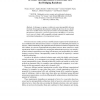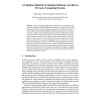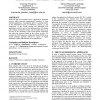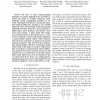55 search results - page 9 / 11 » The Consequences of Decentralized Security in a Cooperative ... |
EGOV
2005
Springer
14 years 1 months ago
2005
Springer
In this paper we propose a solution to secure interoperability between electronic ID management infrastructures enabling the provision of cross-border eServices to mobile citizens....
CCS
2007
ACM
13 years 11 months ago
2007
ACM
The problem of key management for access control systems has been well-studied, and the literature contains several schemes for hierarchy-based and temporal-based access control. ...
DBSEC
2008
13 years 9 months ago
2008
Pervasive computing applications typically involve cooperation among a number of entities spanning multiple organizations. Any security breach in any single entity can have very fa...
WWW
2006
ACM
14 years 8 months ago
2006
ACM
Today, the Web is increasingly used as a platform for distributed services, which transcend organizational boundaries to form federated applications. Consequently, there is a grow...
ISCAS
2008
IEEE
14 years 1 months ago
2008
IEEE
— The lack of robust tamper-proofing techniques in security applications has provided attackers the ability to virtually circumvent mathematically strong cryptographic primitive...




